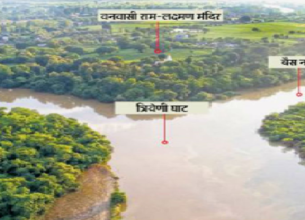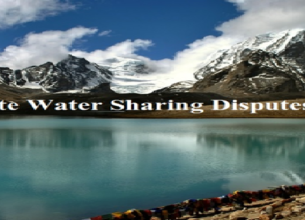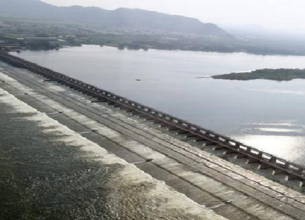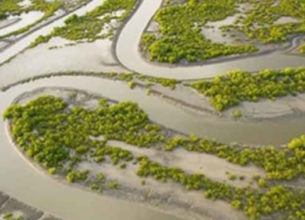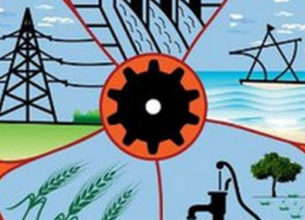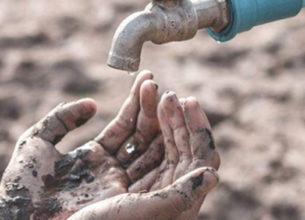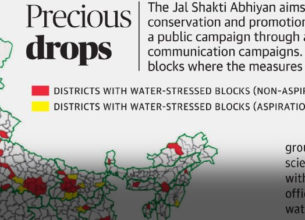NATIONAL INTERLINKING OF RIVERS AUTHORITY
04, Mar 2020
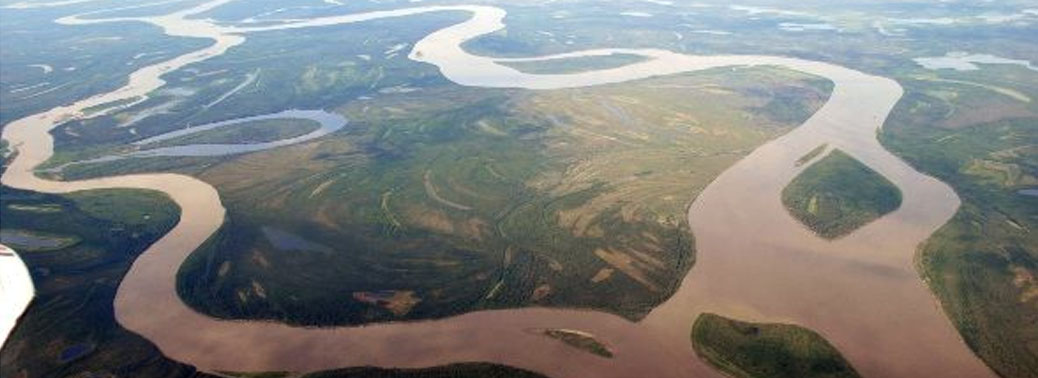
Prelims level : Regulatory Bodies
Mains level : GS-I Important Geophysical phenomena such as earthquakes, Tsunami, Volcanic activity, cyclone etc., geographical features and their location - changes in critical geographical features (including water bodies and ice-caps) and in flora and fauna and the effects of such changes.
Why in News?
- The Central government is working on the establishment of an exclusive body named National Interlinking of Rivers Authority (NIRA) to implement projects for linking rivers.
What is River Interlinking?
- The National River Linking Project (NRLP)formally known as the National Perspective Plan, envisages the transfer of water from water ‘surplus’ basins where there is flooding, to water ‘deficit’ basins where there is drought/scarcity, through inter-basin water transfer projects.
- ‘Surplus’ means that it is the extra water available in a river after it meets the humans’ requirement of irrigation, domestic consumption and industries thereby underestimating the need of the water for the river itself.
- The term ‘deficit’ has also been viewed in terms of humans only and not from the river’s perspective, which includes many other factors.
About the Proposal:
- The proposed body is expected to take up both inter-State and intra-State projects.
- It will also make arrangements for generating up funds, internally and externally.
- An updated draft Cabinet note has been circulated to other Ministries in the Central government.On receipt of comments, the note will be finalised by the Ministry of Jal Shakti and sent to the Union Cabinet for approval.
- The proposal for an apex body on river linking has been under discussion for the past 18 months. However, as of now, no specific timeline has been determined for the constitution of the Authority.
- Once approved, the projects will be pursued as national projects, wherein the Centre will absorb 90% of the cost and the States concerned the rest.
Currently who is responsible for the Interlinking of Rivers?
- The National Water Development Agency (NWDA) is responsible for the formulation of proposals of the linking of rivers.
- NWDA is the agency of the Union Ministry of Water Resources. It was set up in July, 1982 as autonomous society under the Societies Registration Act, 1860.
- It was established to carry out the water balance and other studies on a scientific and realistic basis for optimum utilisation of Water Resources of the Peninsular rivers system.
- Besides it was tasked to prepare feasibility reports and give concrete shape to Peninsular Rivers Development Component of National Perspective.
- In 1990, it was also entrusted with the task of Himalayan Rivers Development Component of National Perspectives.
- Recently, the functions of NWDA have been further modified and the work of preparation of detailed Project Reports (DPR) of various link proposals and Pre-feasibility Reports.
- It has been also entrusted to prepare feasibility reports of intra-State links as proposed by the States.
What are the Projects under Examination?
- As of now, six ILR projects — the Ken-Betwa, Damanganga- Pinjal, Par-Tapi-Narmada, Manas-Sankosh-Teesta-Ganga, Mahanadi-Godavari and Godavari-Cauvery (Grand Anicut) — have been under examination of the authorities.
- With regard to the peninsular rivers, the Centre has chosen to focus on the Godavari-Cauvery link than the earlier proposal to link the Mahanadi-Godavari-Krishna-Pennar-Cauvery Rivers. The latter has eluded consensus given reservations from Odisha.
What are the Benefits?
- A national water grid aims to connect various surplus rivers with deficient rivers.
- It aims to transfer excess water from water-rich to water-deficit regions.
- This is to help improve irrigation, increase water for drinking and industrial use.
- Mitigating drought and floods to an extent are also part of the objectives.
What are the Concerns?
- There are significant environmental concerns associated with inter-basin transfer. The ecology of every river is unique. Letting the waters of two rivers mix may affect biodiversity.
- Besides, it involves construction of a massive network of canals and dams, which would lead to large-scale displacement of people.
- It may make changes to agricultural patterns, and affect livelihoods.
- In addition, rainfall patterns are changing due to climate change.
- So the basins now supposed to be surplus, might cease to be so in few years.
- There are financial concerns as well, related to the projects. In 2001, the total cost for linking the Himalayan and peninsular rivers was estimated at Rs. 5,60,000 crores. The cost is now likely to be substantially higher.
- Also, the cost-benefit ratio might no longer be favourable.
Way Forward:
- The necessity and feasibility of river-interlinking should be seen on case to case basis, with adequate emphasis on easing out federal issues.
- The government should alternatively consider the National Waterways Project (NWP) which “eliminates” friction between states over the sharing of river waters since it uses only the excess flood water that goes into the sea unutilized.
- Local solutions (like better irrigation practice) and watershed management, should be focused on.



